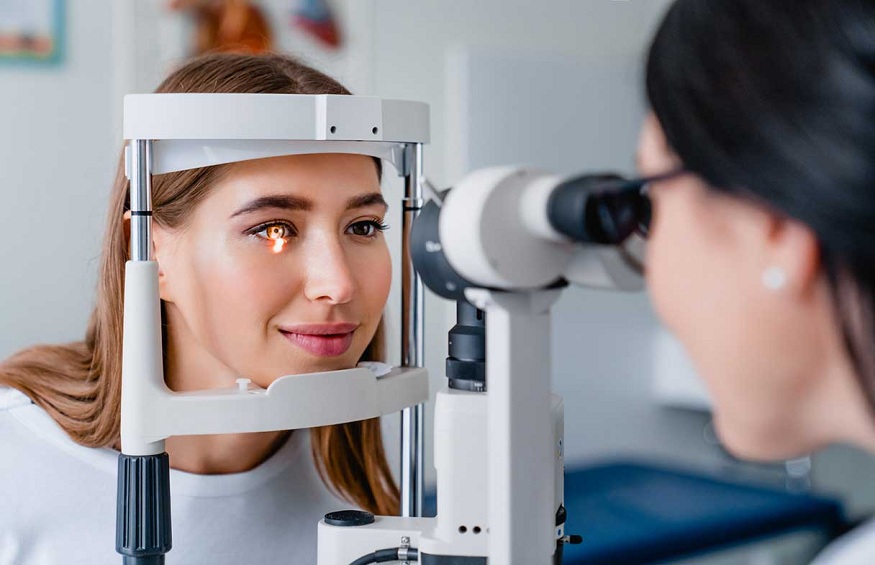People often wonder, how often should you get your eyes checked? Well, it is influenced by your age, eyes and family history.
If you are under the age of 40 and have no visual issues, your doctor may advise you to get routine eye examinations every two years. They might also inform you that you don’t require any testing. Inquire as to what they believe is best for you.

If you’re 40 or over, you should have your eyes tested every 1 or 2 years.
If you’ve ever had any eye problems in the past or are at risk of acquiring them (if someone in your family has), you should see an eye doctor at least once a year.
Why? You should check to determine whether you have any major, often “silent” problems with your eyesight, such as:
- Glaucoma
- Age-related macular degeneration
- Cataracts
- Diabetic retinopathy
If your kid has no risk factors for eye disorders, they should have their eyesight evaluated as a newborn and again at each routine health visit. It will be easy for the doctor to assess their eyes by age three. After the first grade, students should get eye exams every 1 to 2 years.
Are My Eyes at Risk?
If you have an underlying health condition such as high blood pressure, work in a profession that needs you to use your eyes a lot, or use medicines that might impair your vision, you may need more regular checks.
If you have type 1 diabetes, have your eyes tested within 5 years of diagnosis and then every year after that. If you’ve been diagnosed with type 2 diabetes, you’ll need an eye check up as soon as possible. After that, have your eyes tested every year.
How to Prepare
Mention any eyesight problems when you call to schedule your checkup.
Make a list of any questions you wish to ask the doctor before you leave. Prepare to update them on any medications you’re taking and your (and your family’s) eye health history.
Bring your glasses and contact lenses, as well as the prescription. Bring sunglasses for the journey home as well. To dilate your pupils, the doctor may use eye drops. This is referred to as dilatation. Following that, your eyes will be sensitive to light.
Eye Exam Process
First, your eye doctor or an office staff member will inquire about your medical and visual history.
The test might span anywhere from 30 minutes to several hours, depending on the technology utilised. It will address both your vision and your eye health.
You will almost certainly have all or most of the following eye examinations, as well as maybe some others:
- Eye muscle movement test: This evaluates the alignment of your eyes. The doctor will observe your eye movements as you follow a target (such as a finger tip or a pen) as it travels in different directions.
- Cover test: This will determine how well your eyes operate together. You’ll be looking at a tiny target a distance away. The doctor will cover and uncover each eye accordingly to see how much your eyes move. Your doctor will also look for an eye that moves away from the target.
- External examination and pupil reactions: The doctor will observe how your pupils react to light and items close to you. At the same time, the doctor will examine the whites of your eyes and the posture of your eyelids.
- Visual acuity test: You’ll be sitting in front of an eye chart with letters that become smaller as you read along each line. You’ll cover each eye in turn and read loudly, working down the chart until you can’t read the letters anymore.
Slit lamp (biomicroscope): This instrument magnifies and illuminates the front of your eye. Your doctor uses it to examine your iris, cornea, lens, and the back of your eye for symptoms of specific eye disorders






Leave a Reply
You must be logged in to post a comment.